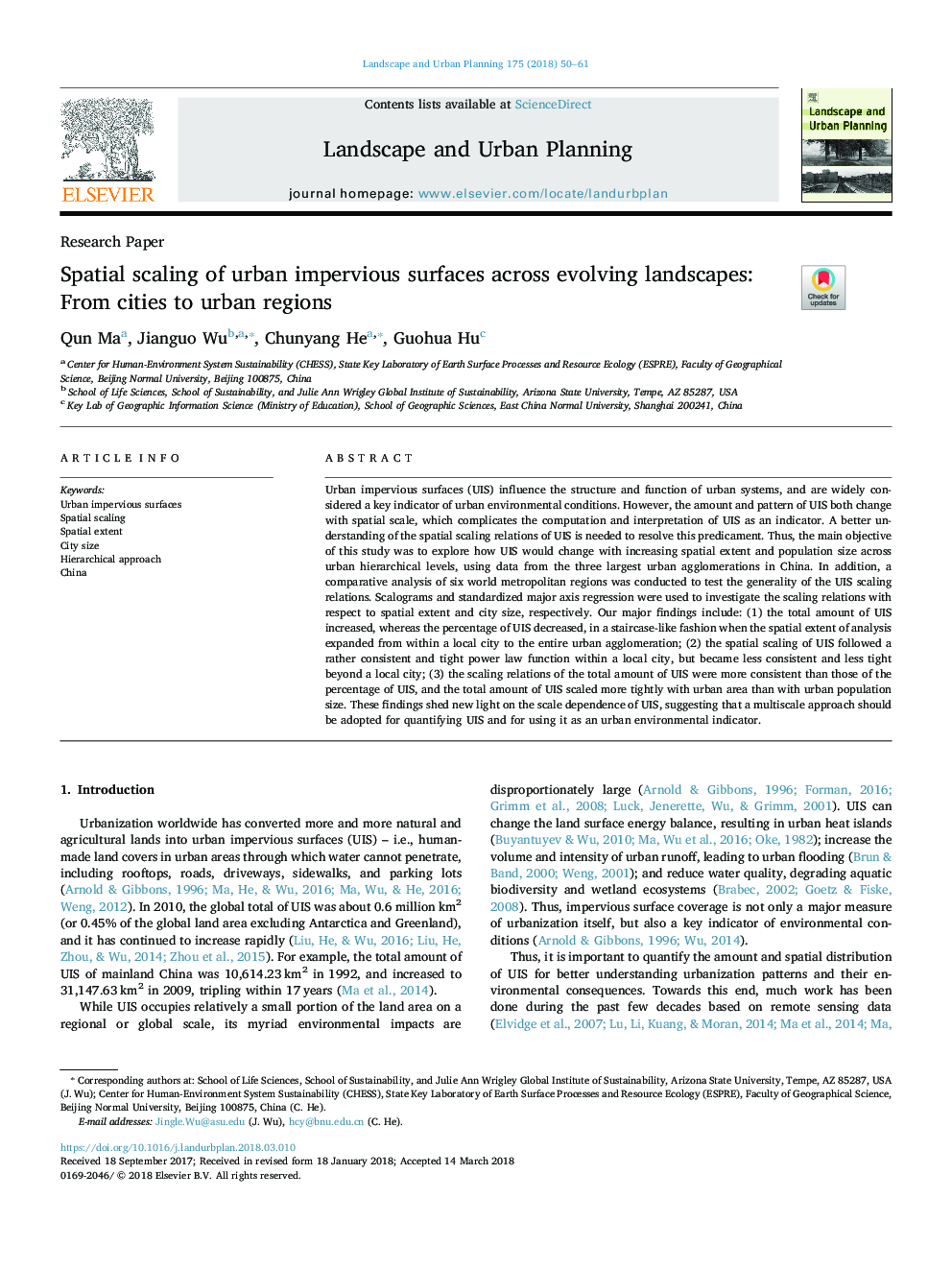| Article ID | Journal | Published Year | Pages | File Type |
|---|---|---|---|---|
| 7459742 | Landscape and Urban Planning | 2018 | 12 Pages |
Abstract
Urban impervious surfaces (UIS) influence the structure and function of urban systems, and are widely considered a key indicator of urban environmental conditions. However, the amount and pattern of UIS both change with spatial scale, which complicates the computation and interpretation of UIS as an indicator. A better understanding of the spatial scaling relations of UIS is needed to resolve this predicament. Thus, the main objective of this study was to explore how UIS would change with increasing spatial extent and population size across urban hierarchical levels, using data from the three largest urban agglomerations in China. In addition, a comparative analysis of six world metropolitan regions was conducted to test the generality of the UIS scaling relations. Scalograms and standardized major axis regression were used to investigate the scaling relations with respect to spatial extent and city size, respectively. Our major findings include: (1) the total amount of UIS increased, whereas the percentage of UIS decreased, in a staircase-like fashion when the spatial extent of analysis expanded from within a local city to the entire urban agglomeration; (2) the spatial scaling of UIS followed a rather consistent and tight power law function within a local city, but became less consistent and less tight beyond a local city; (3) the scaling relations of the total amount of UIS were more consistent than those of the percentage of UIS, and the total amount of UIS scaled more tightly with urban area than with urban population size. These findings shed new light on the scale dependence of UIS, suggesting that a multiscale approach should be adopted for quantifying UIS and for using it as an urban environmental indicator.
Related Topics
Life Sciences
Agricultural and Biological Sciences
Ecology, Evolution, Behavior and Systematics
Authors
Qun Ma, Jianguo Wu, Chunyang He, Guohua Hu,
